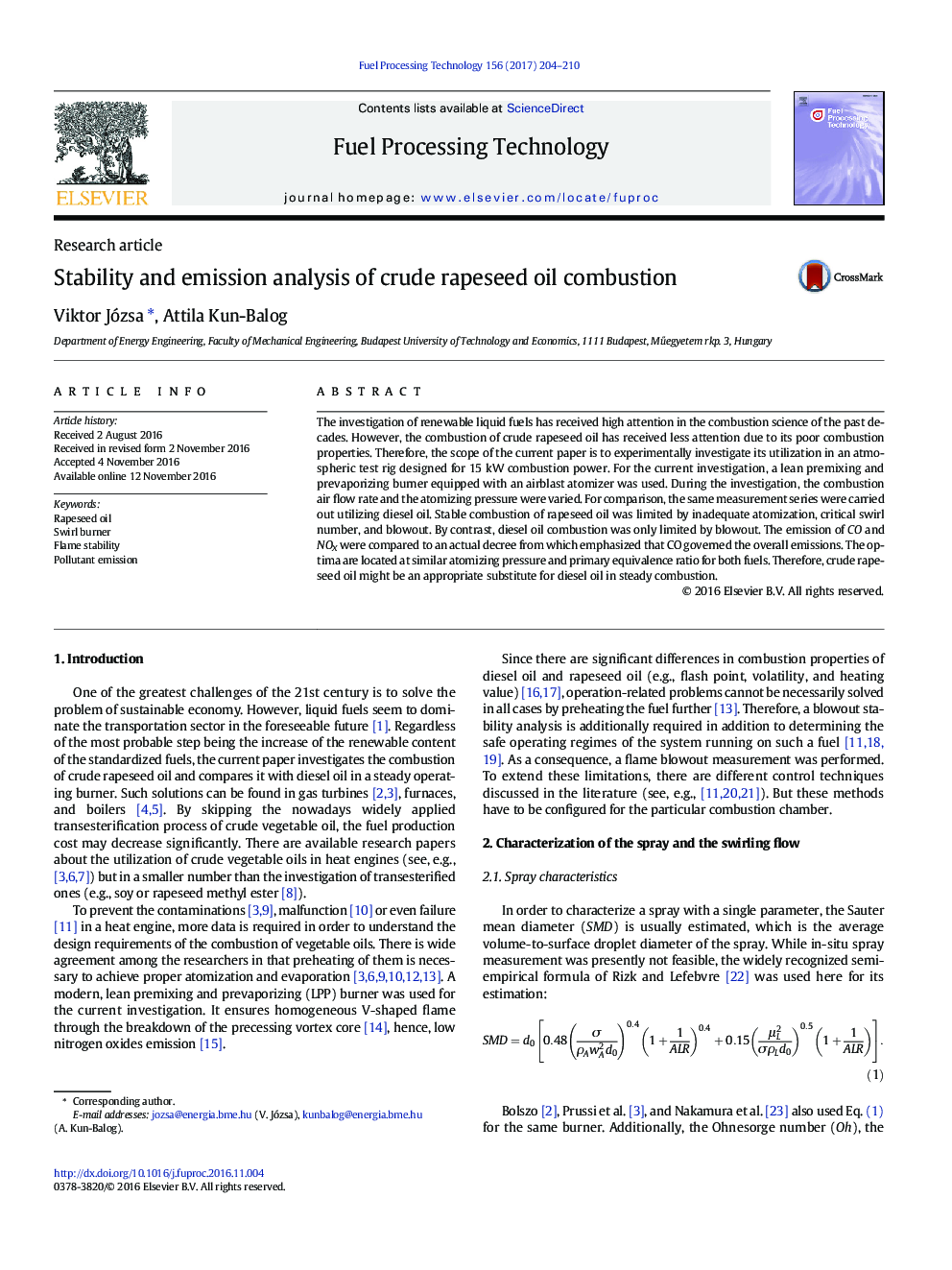| Article ID | Journal | Published Year | Pages | File Type |
|---|---|---|---|---|
| 6476627 | Fuel Processing Technology | 2017 | 7 Pages |
â¢Crude rapeseed and diesel oil combustion were compared under atmospheric conditions.â¢Rapeseed oil flame was not stable above a critical swirl number.â¢The averaged CO and NOX emissions of rapeseed and diesel oil combustion were similar.
The investigation of renewable liquid fuels has received high attention in the combustion science of the past decades. However, the combustion of crude rapeseed oil has received less attention due to its poor combustion properties. Therefore, the scope of the current paper is to experimentally investigate its utilization in an atmospheric test rig designed for 15Â kW combustion power. For the current investigation, a lean premixing and prevaporizing burner equipped with an airblast atomizer was used. During the investigation, the combustion air flow rate and the atomizing pressure were varied. For comparison, the same measurement series were carried out utilizing diesel oil. Stable combustion of rapeseed oil was limited by inadequate atomization, critical swirl number, and blowout. By contrast, diesel oil combustion was only limited by blowout. The emission of CO and NOX were compared to an actual decree from which emphasized that CO governed the overall emissions. The optima are located at similar atomizing pressure and primary equivalence ratio for both fuels. Therefore, crude rapeseed oil might be an appropriate substitute for diesel oil in steady combustion.
